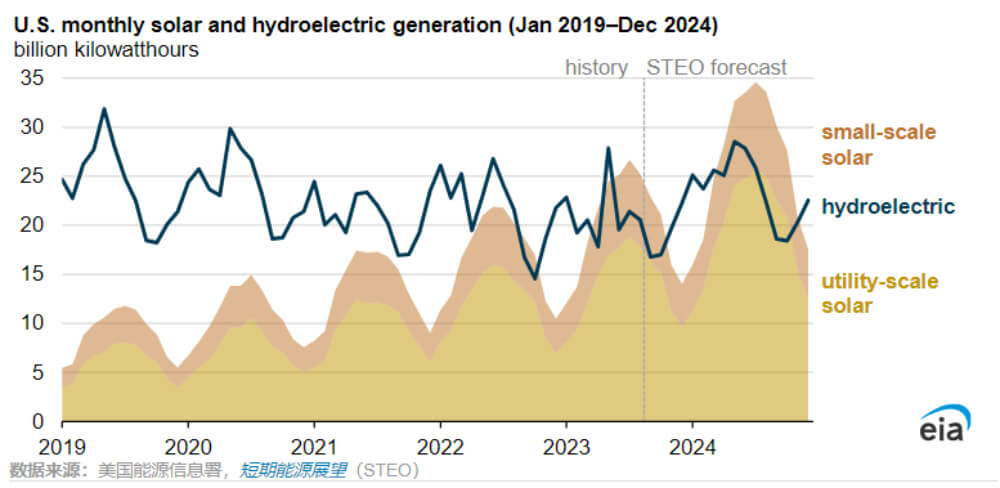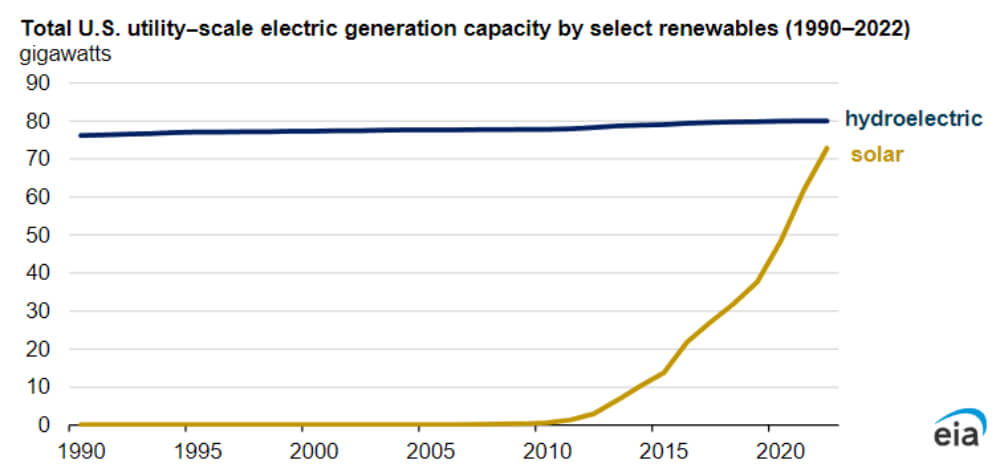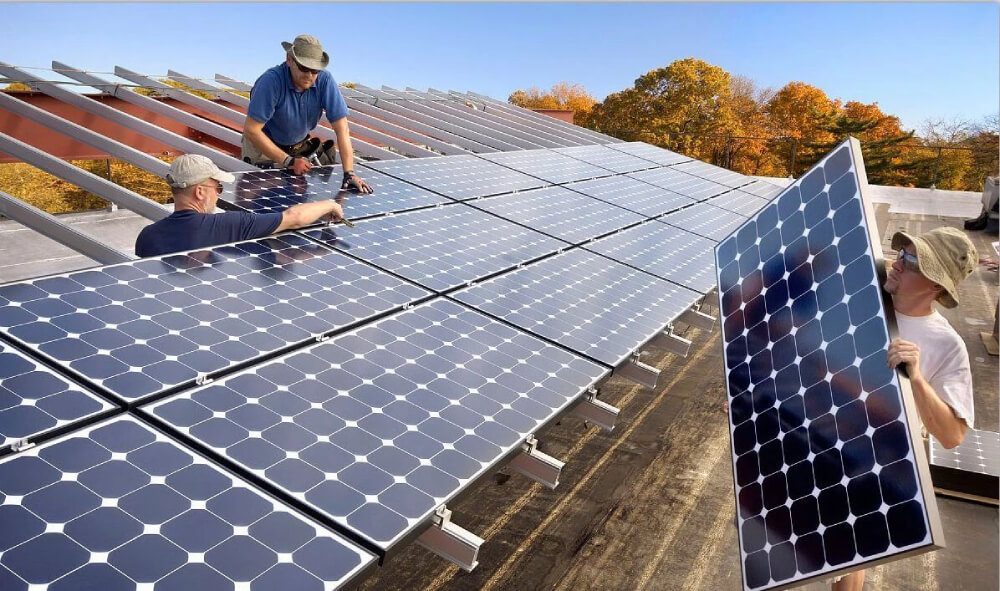EIA forecast: annual U.S. solar power generation to surpass hydroelectricity by 2024
 namkoo solar
namkoo solar
According to our Short-Term Energy Outlook (STEO), we project that U.S. solar power will generate 14% more electricity than hydro in 2024. Our forecast is driven by the continued growth of new utility-scale and small-scale solar installations.

According to our Electricity Monthly, in September 2022, for the first time, monthly solar power generation in the U.S. exceeded hydro generation. During that month, U.S. solar power plants and rooftop solar generated approximately 19 billion kilowatt-hours (kWh) of electricity, compared to the 17 billion kWh generated by U.S. hydroelectric plants.
Thanks to exponential growth in installed solar capacity, solar power once again outpaced hydroelectricity this summer. between 2009 and 2022, installed solar capacity will grow by an average of 44% per year, while installed hydroelectric capacity will grow by less than 1% per year. In our STEO, we project that solar generation will surpass hydro generation for the first time in 2024. in 2019, annual wind generation exceeds annual hydro generation. Growth in solar and wind power in the U.S. follows a similar pattern, with both largely following installed capacity growth.

Incentives such as investment tax credits have encouraged the growth of renewable generation capacity. As of August 2023, installed solar capacity in the U.S. totals more than 125 gigawatts (GW), including 80 GW of utility-scale solar capacity and an estimated 45 GW of small-scale solar capacity. Hydroelectric capacity in the United States has remained relatively stable at around 80 GW over the past several decades.
As of August of this year, weather conditions have resulted in a decrease in U.S. hydroelectric generation. Hydroelectricity generation depends on seasonal hydrological conditions and long-term weather trends. Although weather patterns also affect solar and wind generation, the largest contributor to additional generation from these sources is that they are the fastest growing generators.

During periods of high demand or high prices, hydroelectric generators have reservoirs that store water and release it through dams to produce electricity. This ability to control output is limited by long-term hydrological conditions and other complexities associated with water rights and recreational use. Despite these challenges, hydroelectricity remains a key source of hourly generation patterns in regions such as the Pacific Northwest.



































